Spoiler warning: This is a focus on the anime adaptation of Usagi Drop, and definitely contains spoilers for both the manga and anime. I assume you’re familiar with the overall story and characters. If not, give the anime a try and find out why I think you can enjoy it as its own complete work!
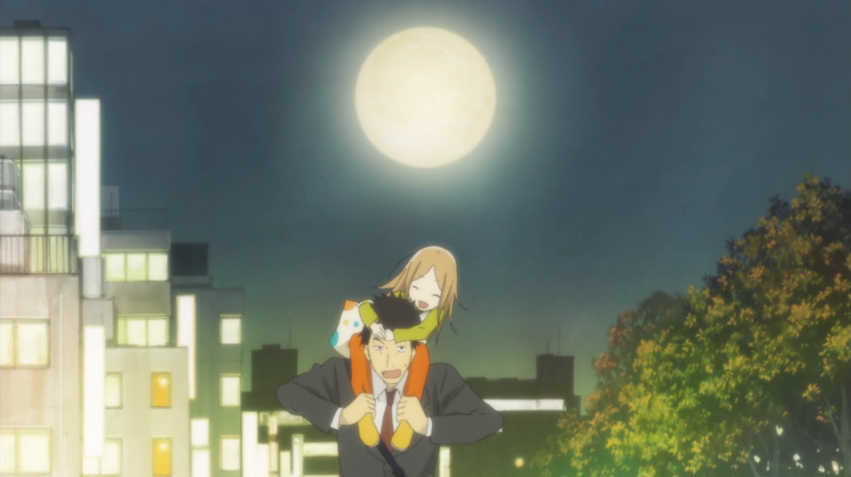
For the most part, family manga and anime (that is, anime about families) fall into the nichijou kei (daily life) or slice-of-life bucket. Stories like Yotsuba&! and Sweetness and Lightning show us life through the eyes of a single parent and their child. These stories are often lighthearted, sweet, and sprinkled with the challenges of daily life when family looks a little different than the house next door. Usagi Drop (Bunny Drop) was recommended after seeing Sweetness, and understandably so. Both depict a kindergarten age kid, a single father figure, and some central theme around forging connections. Both are also manga adaptations, though Sweetness takes a more traditional adaptation path and sticks true to its source material while Usagi Drop really becomes its own complete story.
The Usagi Drop manga and its anime adaptation both stand on their own as complete works, and they’re absolutely parallel worlds. Yumi Unita-sensei, the mangaka, created a serious, beautiful, and interesting story with grounded and believable characters, but director Kamei Kanta and Production I.G. take the art and emotional storytelling to new heights. Crying at the end of the anime and hoping to fill the void left behind, I purchased and tore through the entire 10-volume manga series. I ended up feeling somewhat let down by a simpler art style and surprising tonal differences. The Usagi Drop anime is absolutely a superior product, but exchanges the slightly darker, serious, and almost political message that Unita-sensei delivers for a more jovial labor of love.
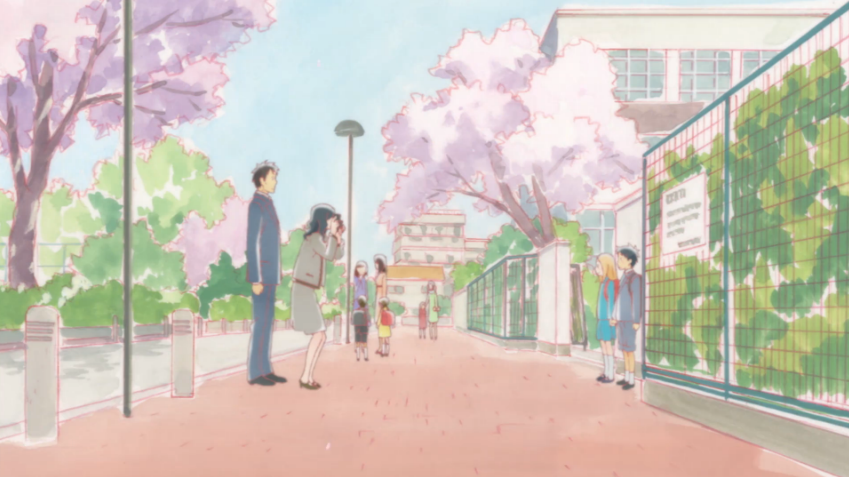
Adaptations are tricky, and a touchy subject. Anime YouTubers Mother’s Basement and Digibro both have fantastic videos on adaptations, which I’ll highly recommend if you’re interested in the differences between an original anime and a work adapted. As mentioned before, Sweetness and Lightning is a fairly straightforward adaptation of its source manga. Sweetness uses food as its shared medium for building character connections, and while there’s some excellent meshi tero (food porn) the story feels better in a manga format. The studio (TMS Entertainment) does a great job of bringing the story to life, but that’s all it becomes. It’s still better than some adaptations like My Little Monster or Maid-sama! which have to make huge sacrifices to condense thirteen volumes (or twenty volumes for Maid-sama!) into a single anime cour. My Little Monster remains my favorite shoujo manga to date, but its rushed adaptation is an article for another day.
Excellent adaptations do exist. K-On!!, Fullmetal Alchemist, Mob Psycho 100, and my focus, Usagi Drop, are all spectacular examples. They become something totally new by interpreting the story instead of simply re-telling in a different medium. The crew behind Usagi Drop do this in some really novel ways. For starters, the anime only tells the story of Rin and Daikichi until the end of the fourth volume, where the remaining six volumes jump the reader ten years into the future. This was done mostly as the manga was unfinished before anime production began and allowed Production I.G. to forge an ending that, many readers of the manga agree, is much more suited for the story. Through their art, pacing and editing, storytelling, and showing instead of telling, they expand and unfold Unita-sensei’s story into something with greater audience potential.
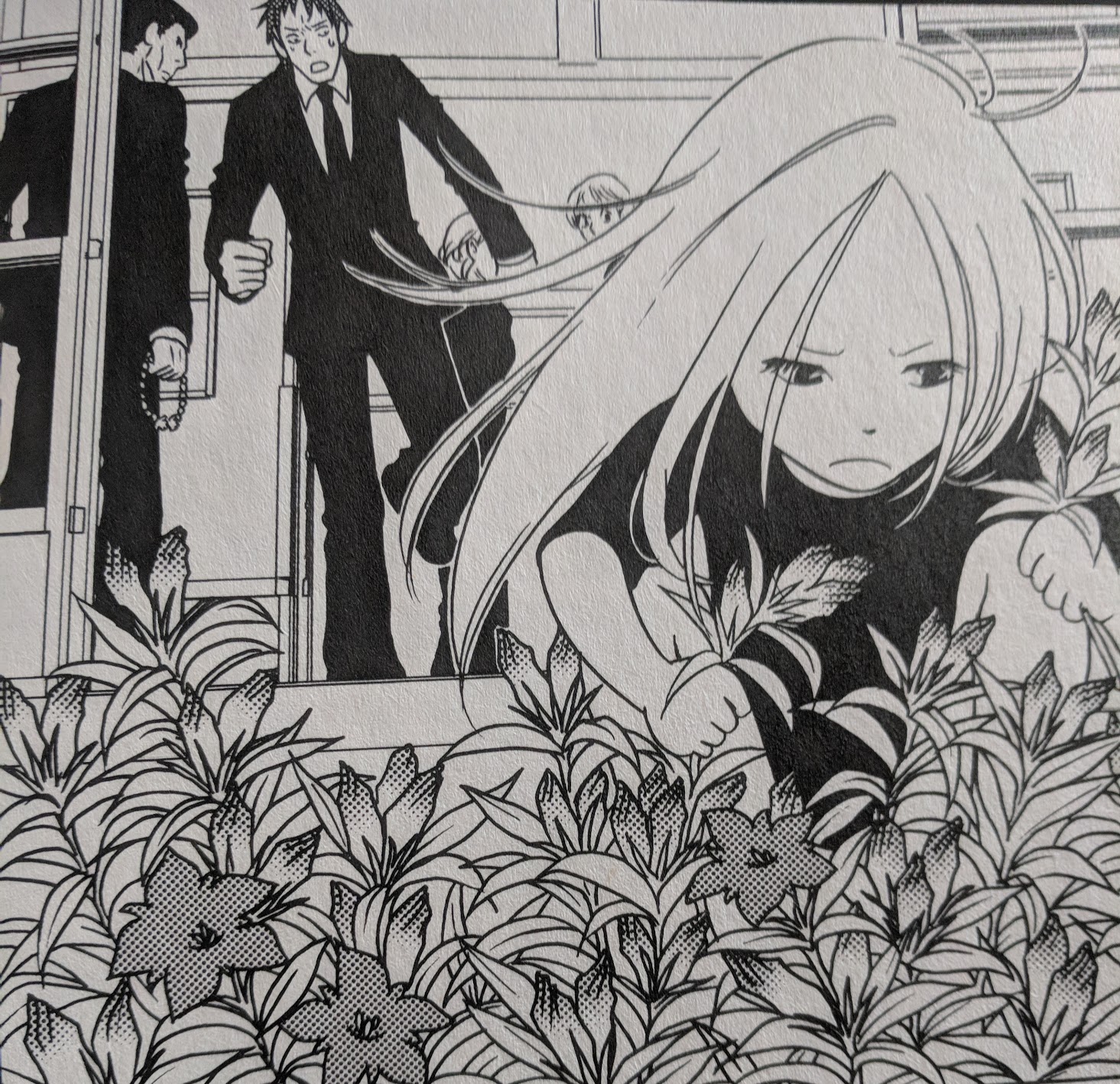
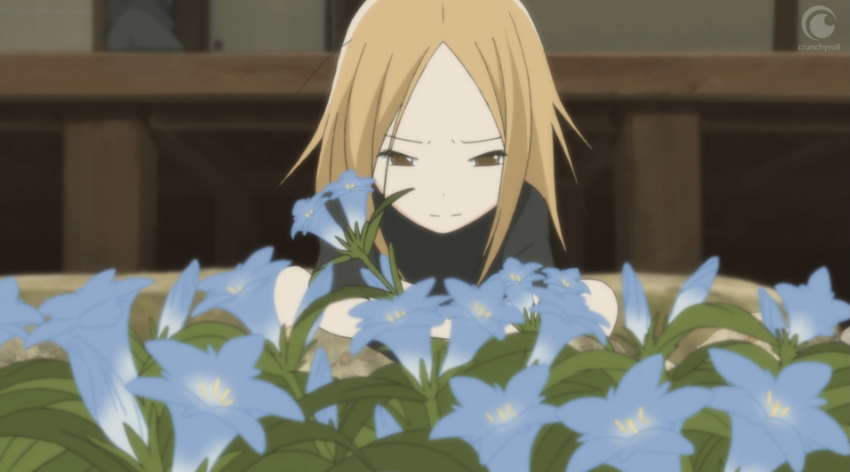
Given a simple original art style, they take things to another level. Unita-sensei is certainly a talented artist. Her character designs for Rin and Daikichi feel real, and her sense of perspective is well-developed. Her style is distinct, and matches well with her expository, character-driven story. It’s good, but I don’t find it particularly memorable. Screentone is used somewhat sparingly, and mostly for accent or impact. Contrast this with the anime’s use of watercolors (often when seeing things from Rin’s point of view) and soft pastels. I don’t have any examples of a stunning background in the manga (they’re all good, just not mind-blowing) but the anime backgrounds often feel lush and alive. Everything is rather beautiful, which matches the story’s tagline, “Don’t you think this world is better than you expected?” The opening and ending both feel like a kid’s art project, which is a really nice touch, too.
Even with their own spin on art style, Prod I.G. stays true to Unita-sensei’s art and designs. There are many 1:1 scenes, and everything feels built upon her original work. Prod I.G. does especially well at teasing out little background scenes. For example, after their first shopping trip, Rin bounces around on her stacked futon while Daikichi makes a call. This is shown in two panels and some motion lines, but is used for about 60 seconds as a background gag. As the cuts shift focus between Daikichi and his cousin, Haruko, Rin is seen climbing up onto the futon, then plopping down face-first, then bouncing around with more and more energy until falling off, until calmly resting at last.

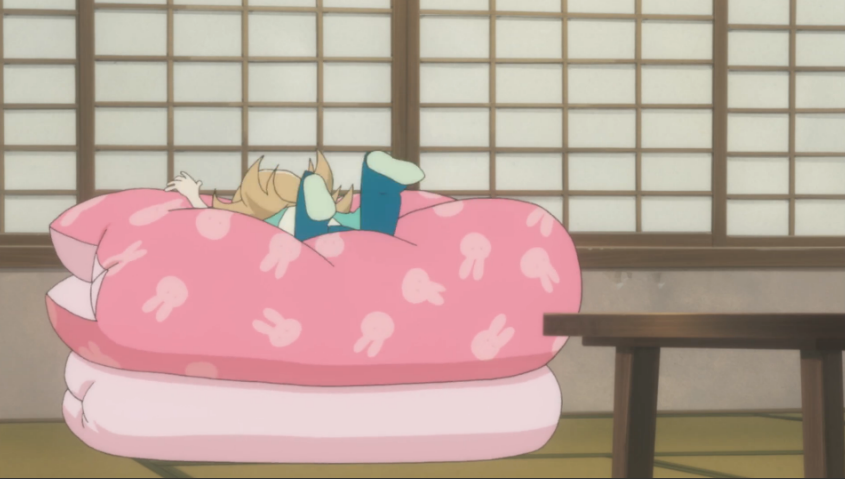
We’re cut between Haruko, Rin, and Daikichi all at once. Rin’s bouncing becomes more and more energetic.
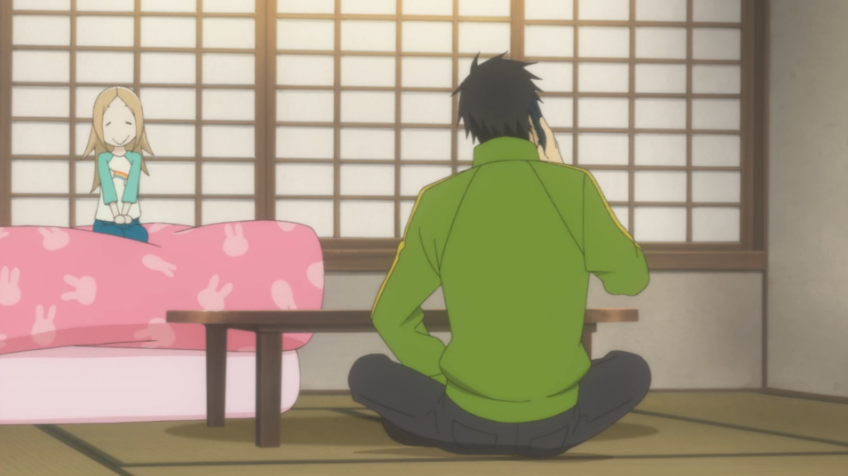

It’s clear Prod I.G. was able to take their time. There’s so much thoughtful editing and pacing, which is extremely refreshing. The first episode is literally just the first 30 pages of the manga. The storywriter, Kishimoto Taku, rearranges some pieces to create a cohesive and free-flowing introduction. It’s a full 22 minutes, though you wouldn’t know it. They maintain this perfect flow throughout the series, sometimes in really small ways by showing instead of telling, and sometimes in much bigger ways - the first half of the ninth episode, A Typhoon Has Come! is built upon a pun Kouki makes in the manga.
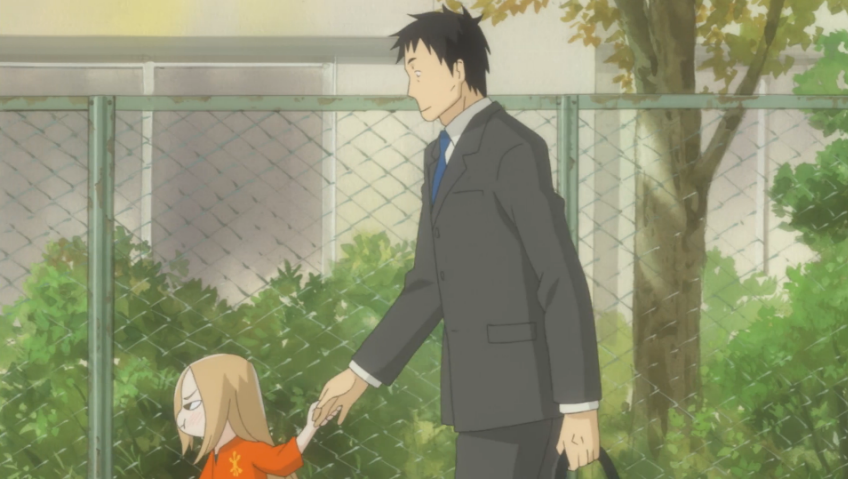

Naturally, manga is forced to be very linear. Daikichi’s phone call to Haruko is played pretty straight, with Reina interrupting her mom wanting to talk to Rin being the only major interruption. The anime amps things up, showing Haruko as much more busy, introduces us to her home life a bit with her housekeeper answering the phone as Haruko makes dinner, and ties in the Reina gag with a fantastic audio cue of what it actually sounds like as a kid yells through the phone.
This page gets expanded into about 90 seconds of Haruko’s life, a background gag with Rin, another one with Reina, and the anime introduces us to Haruko’s housekeeper.
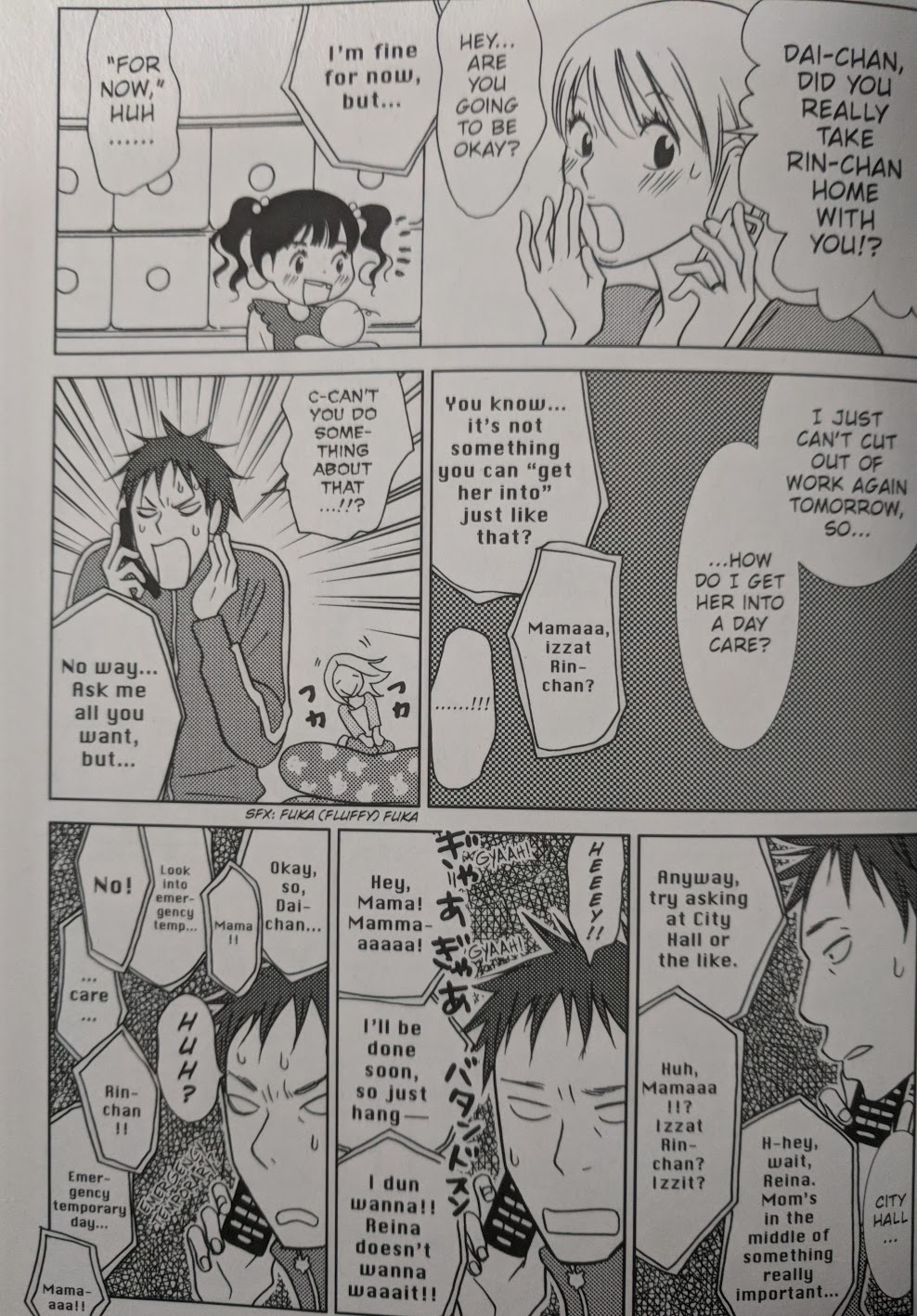
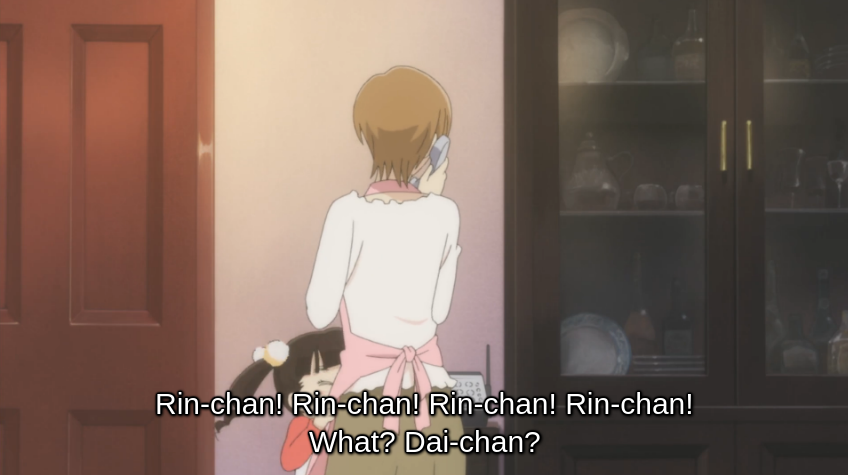

Manga has its limitations in terms of storytelling, pacing, dialogue, exposition, and depth. Certainly, it is a visual medium, but is best with a deep, engaging story which often must be explicitly told. All too often, poor adaptations just dump all their internal and external dialogue into expository scenes without considering their destination medium. Anime gives creators the ability to show instead of tell. Prod I.G. does this in some really clever ways. Compare the pages where Daikichi remarks on how Rin likes “lots of little things,” but the anime just shows her tiny collections of rocks and leaves or toys either in the background or as part of Daikichi’s focus when looking around the living room without them being explicitly called out. Another scene has us in Daikichi’s early morning dream of a tiny purring kitten transforming into his alarm clock. He remarks the futon feels warm next to him, which happens in both versions but the dream is an anime exclusive, a “show, don’t tell.”
These two panels…
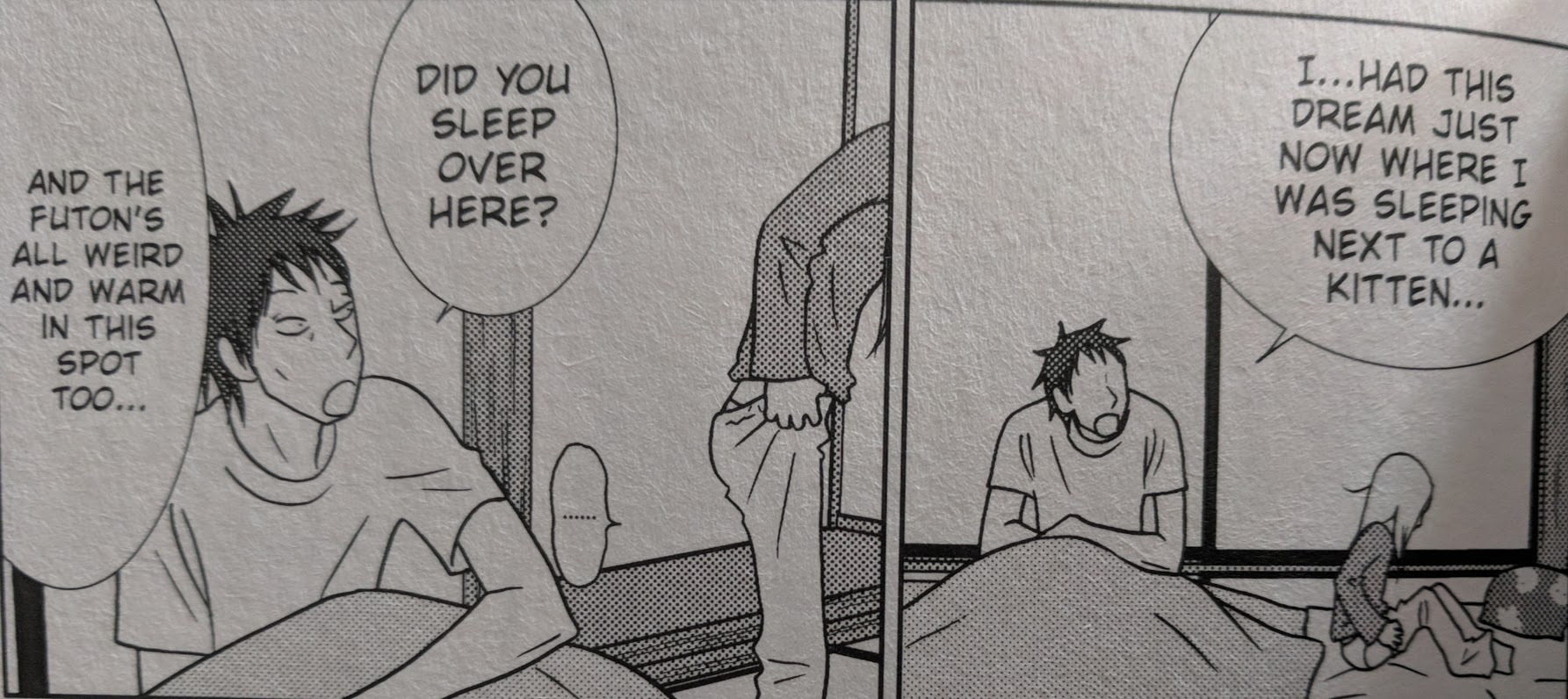
…turn into this series of cuts.

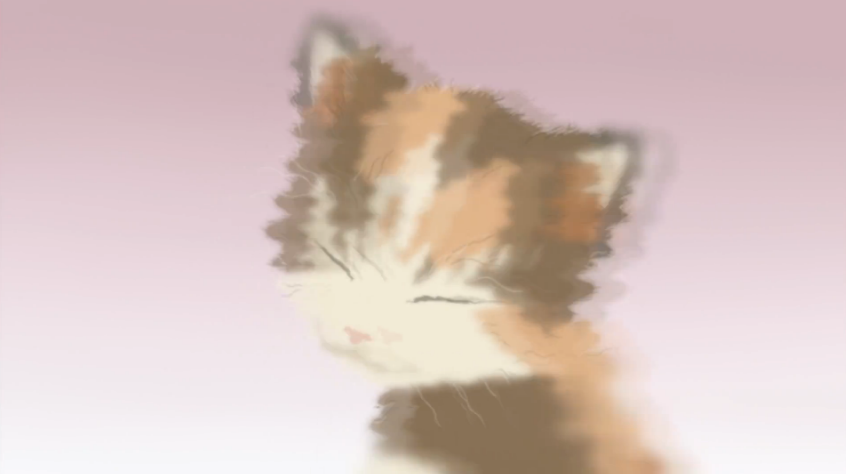
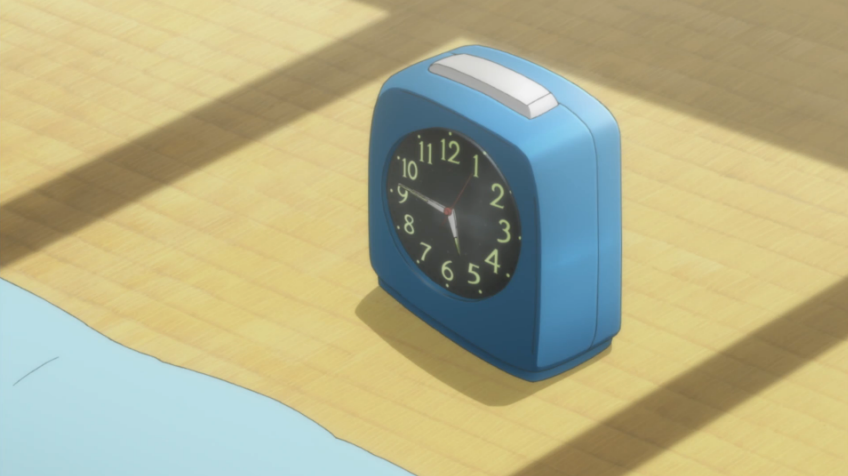
My favorite “show, don’t tell” moment is when Daikichi drops off Rin at daycare for the first time. The manga does well at telling us his feelings, and it’s supported by the art, but the anime absolutely nails this awkward, surreal feeling of a thirty-year-old, childless man visiting a daycare facility for the first time probably since attending one himself. The walla of kids, his facial expressions, and especially the floating cutesy-pootsie emoji surrounding him tie the whole thing together. Since it’s mostly from his perspective, you’re made to feel as awkward as he does.

The single panel gets spread into four or five cuts, meanwhile these little emoji are just floating all around.
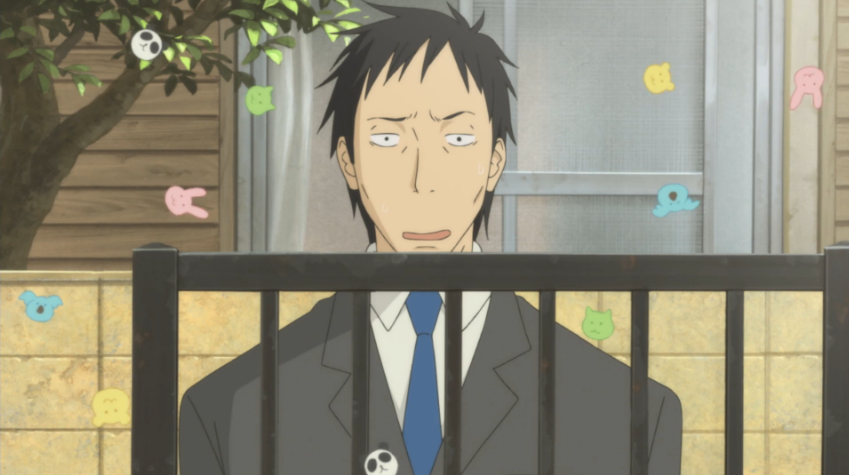
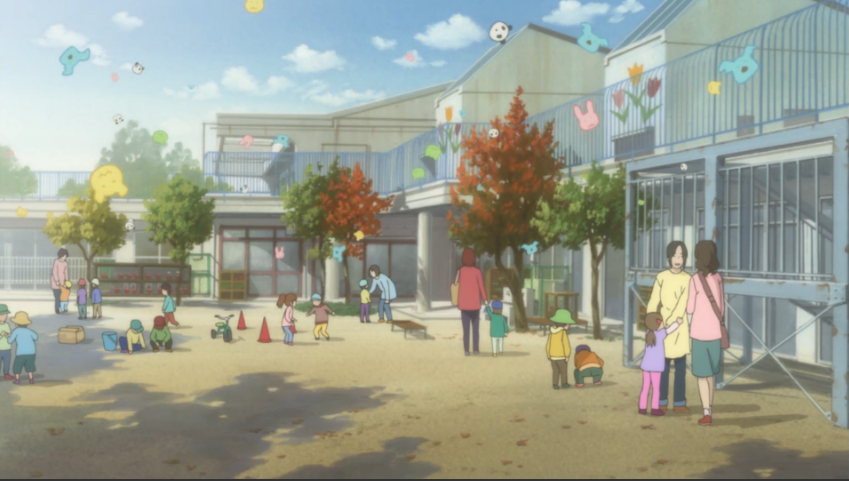
All of this makes for a tremendous adaptation, and Unita-sensei agrees. Upon seeing the first episode, she was blown away and considered her and director Kanta’s thoughts to be “completely in sync.” While their thoughts might be in sync, these stories are parallel worlds. The subject matter is rather serious; the anime sets a lighter tone with a focus on the fun parts while still hitting you with The Feels. Kanta just considers this as a cute story about family, and that it doesn’t address any particular social issues, though he’d be happy if it was interpreted that way. In an interview, he says Daikichi has too many “almost unrealistic” positive qualities. The Daikichi Divergence is real. Our manga Daikichi is a bit rougher around the edges, maybe more otokorashii.
While researching for this article, I came across a post from the Anime News Network forums where a commenter suggests that instead of seeing Daikichi as a father figure, he’s more like a single mother. We’re shown vignettes of single (or single-ish) mothers like Nitani-san, who is raising Kouki all alone, Haruko, whose husband is the traditional salaryman and who relies on her housekeeper, and Gotou, who won’t admit she sacrificed herself by taking a demotion to take regular hours. I liked their interpretation, “Single mothers are isolated, restricted, and condemned.”
It’s as though Unita-sensei wants to make a bigger point here. In the anime, Masako, Rin’s biological mother, is almost vilified as a means to strengthen the Daikichi-Rin bond. Her story is treated as a B-plot. She’s obviously not the perfect mother, but her story in the manga is so much more complex. Her relationships with Souichi and her boyfriend are given a fair amount of attention, and sets up some major pieces of the manga post-timeskip. Unita-sensei’s story is filled with women making difficult choices for themselves, their families, and their careers. I don’t think we’re meant to like Masako, but I do think she’s written very deliberately. She considers herself to be less than human, having chosen her work instead of Rin, but seems to reconcile herself towards the end of the manga.
In the anime, Daikichi and Rin are out for a walk. She asks Daikichi to collect some green leaves after picking up the yellow ones from the ground. They’re shown in the background as “lots of little things,” but not explicitly mentioned.

What many fans of the series have trouble reconciling is the manga’s ending. It’s absolutely controversial, with director Kanta saying, “I think it’s great that Daikichi and Rin are able to live happily together. But I still have some mixed feelings about it…” Kanta is very happy to end with Rin and Daikichi clearly on a path to greater understanding and a deeper relationship. We’re primed to think Daikichi and Nitani-san will JUST KISS ALREADY, that Kouki grows up to be a fine young delinquent, and that family is what you make it. This is where an absurdly high number of viewers who go on to read the manga would one thousand per cent agree, wrap a bow on it, ship it, and don’t take one more step.
But, no. Unita-sensei has a very different ending in mind. I’m not exactly fond if it myself, it left me feeling confused and upset for about a week. Usagi Drop goes full shoujo in its second half. Rin is in high school, we have a love triangle, running away at random, and there’s even a wedding between our protagonists…except that it’s not Rin and Kouki, or Daikichi and Nitani-san. Oh no. Our dear Rin slowly realizes, she’s in love with Daikichi, they conveniently aren’t related by blood, and she absolutely wants to get married. Daikichi has no idea how to deal with this, distances himself, and then agrees. They get married. There’s no wedding bells or dresses or big scene, there’s just a slow, final twenty pages as your brain tries to catch up with what’s happened. It really did throw me, but it’s the ending that Unita-sensei wanted. It’s the story she wanted to write.
It’s a confusing and upsetting ending, but it’s also really thought-provoking. It’s one of the reasons I wanted to dig into both stories, as that’s what they are. Separate stories, parallel worlds. Like it or not, Unita-sensei’s Usagi Drop challenges your perspectives, and I’d argue her sense of perspective extends from her art and straight into story. It’s easy to watch the anime, have a lot of fun, and leave with all the warm fuzzies of an iyashikei or slice-of-life series. I’m glad I bought the manga, and it’s probably worth reading again in the future. I’d really like to read another Unita-sensei story, Yoningurashi (The Four of Us) which is another, very different family-themed work. It hasn’t been localized (yet?) and my Japanese is hardly good enough to make it through Yotsuba&! so I’m kind of just waiting for now. I thoroughly enjoyed going back through some volumes of the manga and several episodes of the anime. It reaffirmed my premise that the anime is a superior product, but tells a very different story than the manga. Mostly, it was just a lot of fun. I’ve recovered from the manga ending enough to the point where I felt like I could write about it more objectively.
It’s easy to finish one of the stories and then immediately swap to the other, but there’s enough of a context switch required that my recommendation would be to understand what each story is and is trying to be. Both execute on their premise so well that I’d understand disappointment if just rushing between them. Truly, this is an incredible adaptation, and that’s such a rare find that simply choosing the anime is a guaranteed win - just don’t completely write off the manga when you find out it’s different than your expectations.
